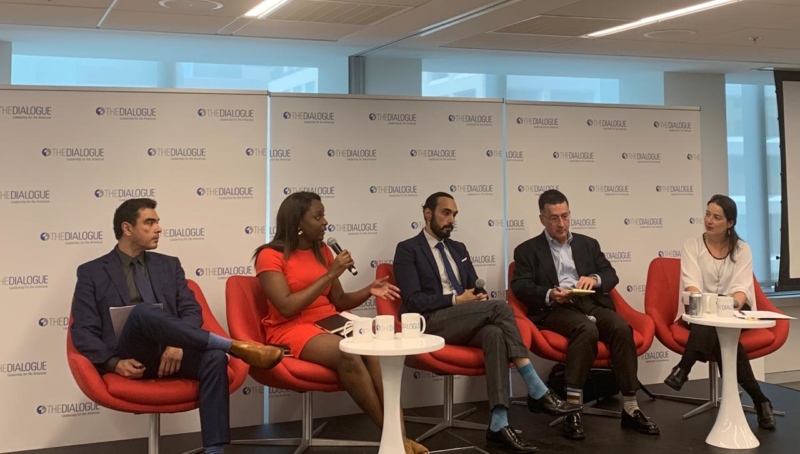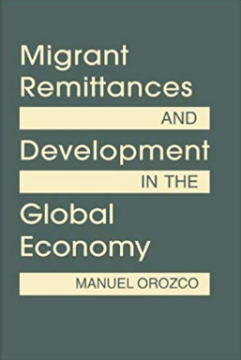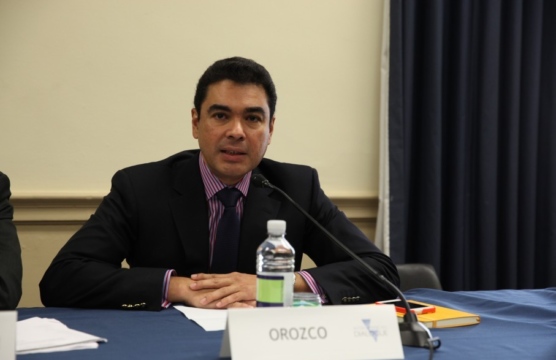The Earthquake’s Impact on Remittances
The earthquake in Haiti has exacerbated an existing distress during the international recession and increased uncertainty of what to do and how to help.
On April 4th, 2019 the Inter-American Dialogue hosted its yearly event on remittances to Latin America and the Caribbean, “Remittances to Latin America and the Caribbean in 2018.” The event brought together a panel of experts for a discussion of 2018 remittance flows, the outlook for 2019, and issues influencing the marketplace. This year, the report takes a look at the impact of political turmoil on remittances – including specific country profiles and south to south corridors – and the growth of account-based and technology-based tools for sending. To discuss these findings, the Inter-American Dialogue convened a panel with Manuel Orozco, Director of the Migration, Remittances and Development Program at the Inter-American Dialogue; Gene Nigro, Vice President of Global Business Development at Remitly; Akinyi Ochieng, Corporate Communications Manager at WorldRemit; and Usman Ahmed, Head of Global Public Policy at PayPal. The moderator of the event was Laura Porras, Associate with the Migration, Remittances and Development Program at the Inter-American Dialogue.
Each year, the Inter-American Dialogue analyzes remittances to the region, identifying areas of growth and new trends that are impacting how people send and receive money. In 2018 family remittances to Latin America and the Caribbean grew by over ten percent, reaching US $85 billion. The growth in remittances stands in contrast to the region’s sluggish GDP growth of less than two percent.
Manuel Orozco began the discussion by pointing out key findings from the Dialogue’s new report, “Remittances to Latin America and the Caribbean in 2018.” He noted that rising levels of human mobility in the region, particularly from countries experiencing political unrest and state fragility, have contributed to remittance growth. Other factors behind the growth we have seen include increases in south-south migration, such as rising numbers of Haitians migrating to Chile. At the same time, the ways that people are sending money have changed, with digital transactions now making up nearly one third of remittances paid in Mexico. Overall, these trends that are taking place speak to the human dimension of international migration, as migrants remain financially connected to their families back home even while living and working abroad.
Orozco’s remarks were followed by a moderated panel of experts that provided additional analysis of these trends. Usman Ahmed of PayPal highlighted the fact that digital technology can have lower costs for people on both sides of the transaction. He also noted that the savings can be measured in the time that is saved, not just the money. According to new research by PayPal, it takes people 30 minutes on average to go in person to an agency and send a remittance, whereas they could send a digital remittance in a fraction of the time. “It is not just the cost of remittances that we look for, but also the time we save people that is very important,” Ahmed concluded.
[caption id="attachment_80877" align="alignleft" width="4020"] From left to right: Akinyi Ochieng (WorldRemit), Usman Ahmed (PayPal), Gene Nigro (Remitly), and Laura Porras (Inter-American Dialogue)[/caption]
From left to right: Akinyi Ochieng (WorldRemit), Usman Ahmed (PayPal), Gene Nigro (Remitly), and Laura Porras (Inter-American Dialogue)[/caption]
Akinyi Ochieng of WorldRemit pointed out that adoption of digital remittances can offer tremendous benefits to consumers. “The advantage we’d be offering to the recipient and the sender would be enormous,” she noted. Moreover, the cost savings could free up important resources that migrants could spend on other things, such as education, as opposed to remittance fees. As such, it is important to identify and address some of the barriers to digital adoption, particularly for rural areas and in terms of financial inclusion.
Furthermore, Gene Nigro of Remitly highlighted the benefits that digital remittances offer in terms of speed and compliance. “The remittance industry is moving to deposit-to-account, and it is moving to mobile wallets,” he noted. From a compliance perspective, it is much easier to monitor digital transactions than transactions coming from remittance agencies. In conclusion, digitalization is better for the industry, the consumer and from a financial point of view, Nigro argued.
The event concluded with a Q&A session which touched on topics including remittances to Haiti, the accuracy of officially reported remittance figures, the types of ID required to send remittances, and migrants’ legal status in relation to access to financial services.
The earthquake in Haiti has exacerbated an existing distress during the international recession and increased uncertainty of what to do and how to help.
How do patterns of migration and remittances differ across regions? What kinds of frameworks support the contributions of remittances to local development?
On February 24th, the Inter-American Dialogue held its annual event on Remittances to Latin America and the Caribbean.
 Paulina Ortega- Inter-American Dialogue
Paulina Ortega- Inter-American Dialogue

